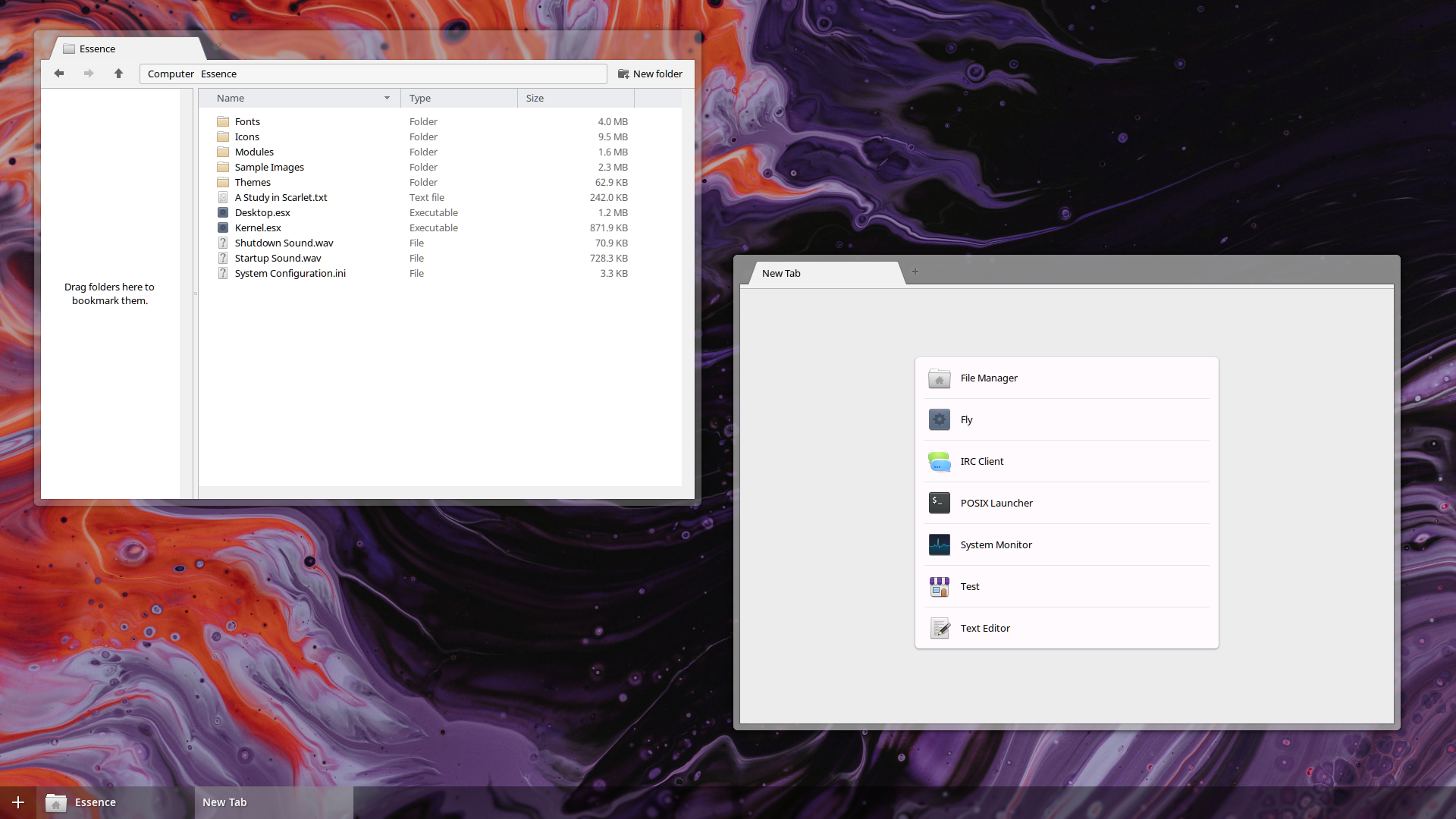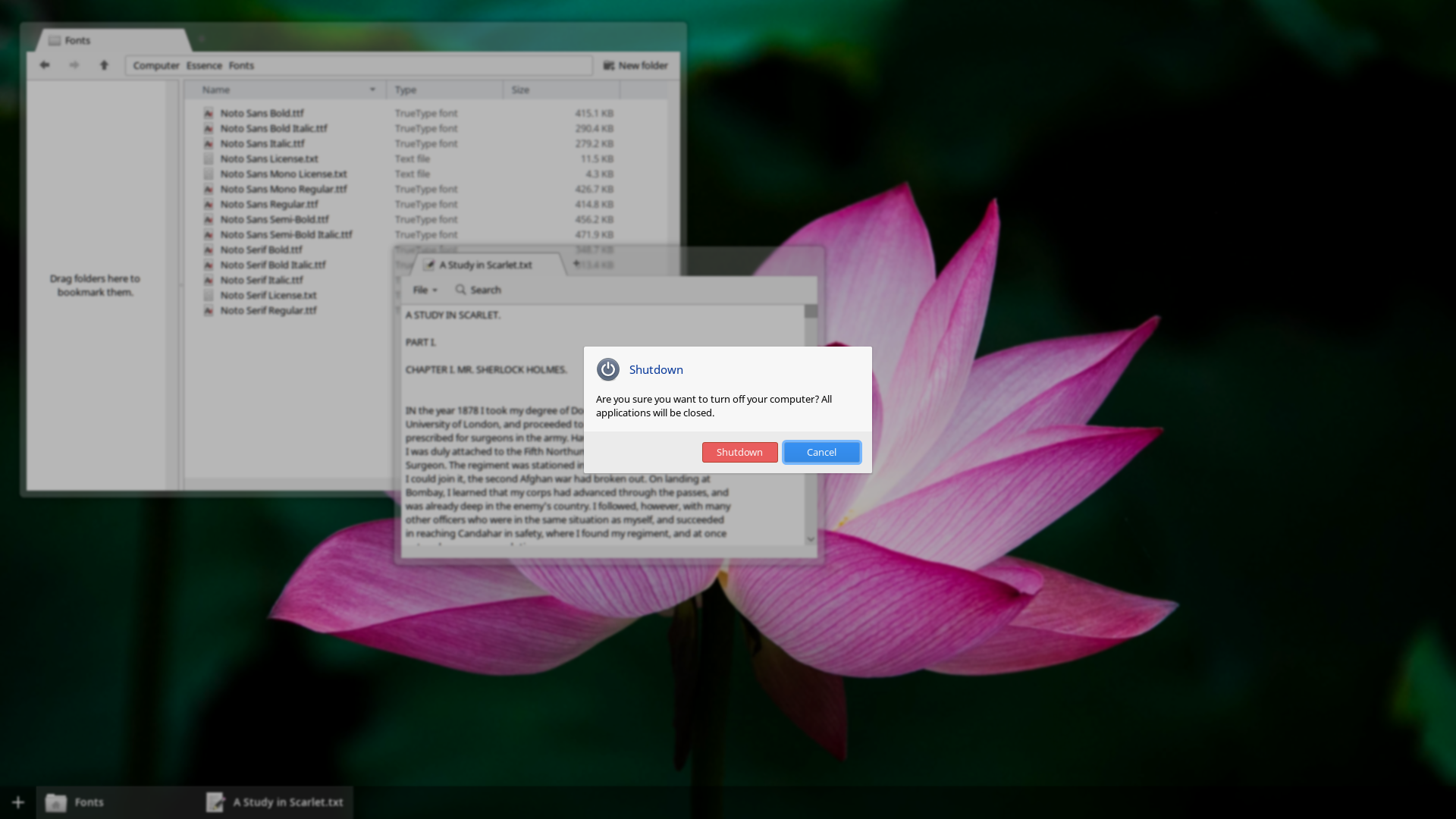mirror of https://gitlab.com/nakst/essence
92 lines
3.6 KiB
Markdown
92 lines
3.6 KiB
Markdown
# **Essence** — An Operating System
|
|
|
|

|
|

|
|

|
|
|
|
## Support
|
|
|
|
To support development, you can donate to my Patreon: https://www.patreon.com/nakst.
|
|
|
|
## Features
|
|
|
|
Kernel
|
|
* Audio mixer.
|
|
* Filesystem independent cache manager.
|
|
* Memory manager with shared memory, memory-mapped files and multithreaded paging zeroing and working set balancing.
|
|
* Networking stack for TCP/IP.
|
|
* Scheduler with multiple priority levels and priority inversion.
|
|
* On-demand module loading.
|
|
* Virtual filesystem.
|
|
* Window manager.
|
|
* Optional POSIX subsystem, capable of running GCC and some Busybox tools.
|
|
|
|
Applications
|
|
* File Manager
|
|
* Text Editor
|
|
* IRC Client
|
|
* System Monitor
|
|
|
|
Ports
|
|
* Bochs
|
|
* GCC and Binutils
|
|
* FFmpeg
|
|
* Mesa (for software-rendered OpenGL)
|
|
* Musl
|
|
|
|
Drivers
|
|
* Power management: ACPI with ACPICA.
|
|
* Secondary storage: IDE, AHCI and NVMe.
|
|
* Graphics: BGA and SVGA.
|
|
* Read-write filesystems: EssenceFS.
|
|
* Read-only filesystems: Ext2, FAT, NTFS, ISO9660.
|
|
* Audio: HD Audio.
|
|
* NICs: 8254x.
|
|
* USB: XHCI, bulk storage devices, human interface devices.
|
|
|
|
Desktop
|
|
* Custom user interface library.
|
|
* Software vector renderer with complex animation support.
|
|
* Tabbed windows.
|
|
* Multi-lingual text rendering and layout with FreeType and Harfbuzz.
|
|
|
|
## Discussion
|
|
|
|
Visit https://essence.handmade.network/forums.
|
|
|
|
## Building
|
|
|
|
**Warning: This software is still in development. Expect bugs.**
|
|
|
|
### Linux
|
|
|
|
Download this project's source.
|
|
|
|
git clone --depth=1 https://gitlab.com/nakst/essence.git/
|
|
|
|
Start the build system.
|
|
|
|
./start.sh
|
|
|
|
Follow the on-screen instructions to build a cross compiler.
|
|
|
|
Once complete, you can test the operating system in an emulator.
|
|
* Please note that by default a checked build is produced, which runs additional checks at runtime (such as heap validation on every allocation and deallocation). This may impact the performance during testing.
|
|
* If you have Qemu installed, run `t2` in the build system.
|
|
* If you have VirtualBox installed, make a 128MB drive called `vbox.vdi` in the `bin` folder, attach it as a to a virtual machine called "Essence" (choose "Windows 7 64-bit" as the OS), and run `v` in the build system.
|
|
|
|
## Configuration
|
|
|
|
From within the build system, run the command `config` to open the configuration editor. Click an option to change its value, and then click the `Save` button. You changes are saved locally, and will not be uploaded by Git. Not all configurations are likely to work; if you don't know what you're doing, it's probably best to stick with the defaults.
|
|
|
|
## Generating the API header
|
|
|
|
If you want your project to target Essence, you need to generate the API header for your programming language of choice.
|
|
|
|
g++ -o bin/build_core util/build_core.c
|
|
bin/build_core headers <language> <path-to-output-file>
|
|
|
|
Currently supported languages are 'c' (also works for C++), 'zig' and 'odin'.
|
|
|
|
There is currently no documentation for the API; for examples of how to use the API, consult the standard applications in the `apps/` folder of the source tree. A minimal application is demonstrated in `apps/hello.c` and `apps/hello.ini`. By placing your application's `.ini` file in the `apps/` folder, it will be automatically built by the build system.
|